July 17, 2018
Protecting an area of the ocean that’s larger than the Maritimes
Estimated reading time: 0 minutes
BY: Alexandra Vance
Topics: Protect Marine Habitat
Right now, our team is aboard the EV Nautilus on the Northeast Pacific Seamount Expedition, mapping and exploring seamounts in the SGaan Kinghlas-Bowie Marine Protected Area (MPA) and the Offshore Pacific Area of Interest (AOI). The AOI is a candidate for becoming Canada’s largest MPA; the present boundary covers a total of 139,700 km2, or 2.53 per cent of Canada’s ocean territory – that’s bigger than Nova Scotia, New Brunswick and Prince Edward Island combined!
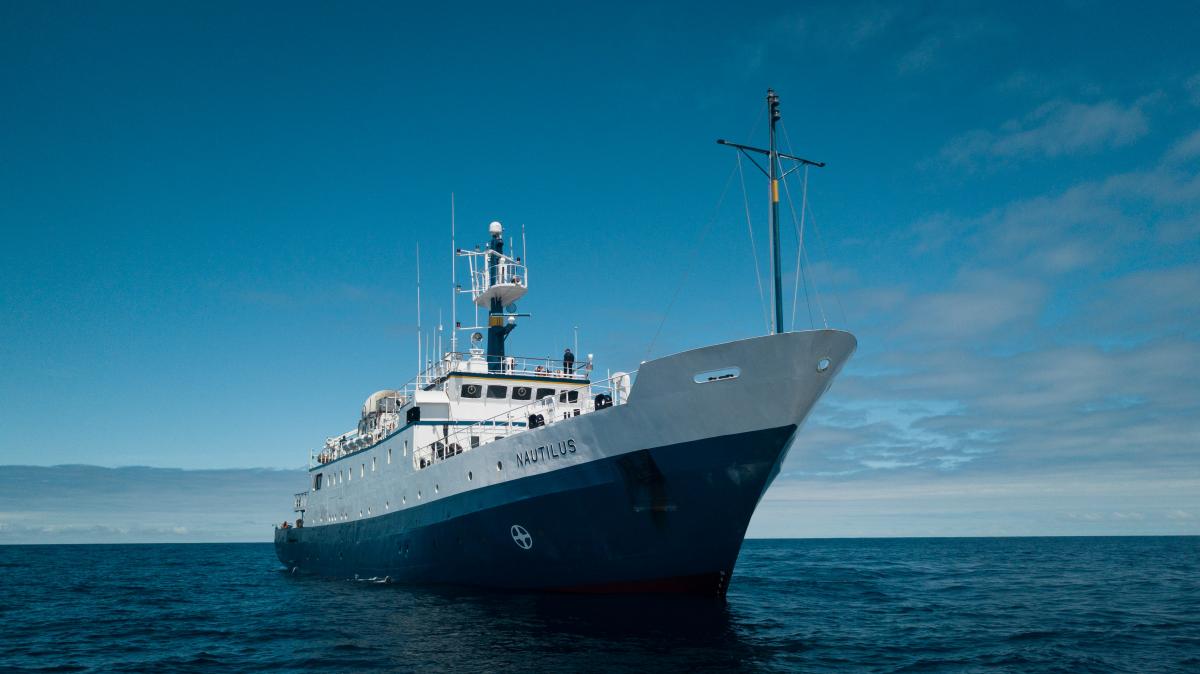
Ocean Exploration Trust’s 1967 research vessel EV Nautilus at sea. Photo Credit: Fisheries and Oceans Canada
An area designated as AOI means that the Government of Canada recognizes it as ecologically and biologically significant and is working towards formal protection through legal designation as a marine protected area. While AOI recognition is an important step, there is much more work to do through scientific investigations and stakeholder consultations to determine the boundaries and zoning for allowable activities.
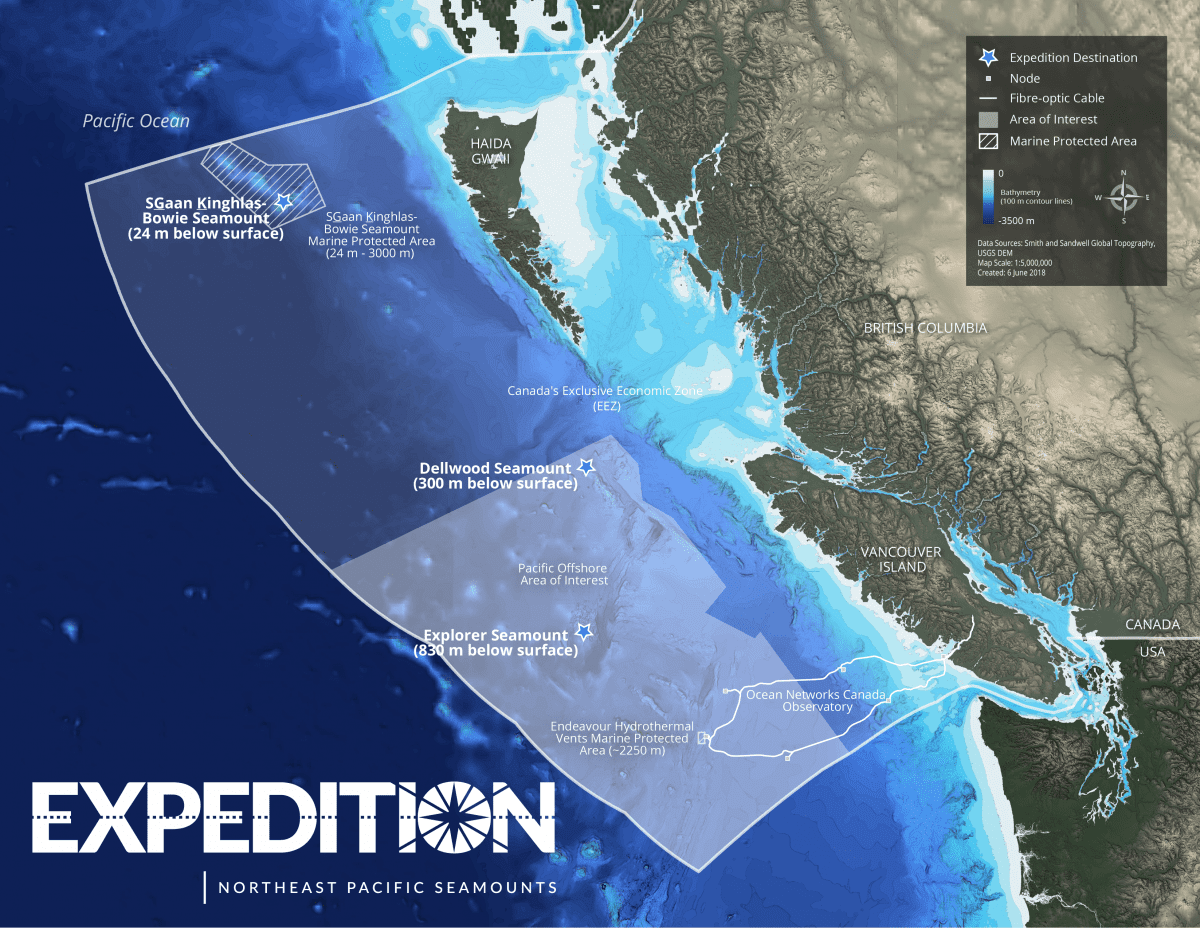
Map of ocean territory in Canada, with the Pacific Offshore AOI and seamounts that will be surveyed during our expedition. Photo Credit: Ocean Networks Canada
So why is the Pacific Offshore AOI so important?
This AOI is home to fragile habitats such as coral and sponge gardens, important fish and species-at-risk, and unique geological features. It has approximately 40 (or 87 per cent) of Canada’s known seamounts and all 18 of Canada’s known hydrothermal vents.
Seamounts, or underwater mountains formed by volcanic activity millions of years ago, rise more than 1,000 metres above the seafloor without reaching the sea surface. They have complex physical features, including pinnacles, ridges and slopes. These structures influence ocean circulation patterns which deliver food and nutrients onto the seamounts, making them highly productive areas that support diverse and vulnerable ecosystems. Hydrothermal vents support unique bottom-dwelling communities depended on bacteria that convert chemical expelled from the vents into energy, much the same way as plants harness the energy of the sun.
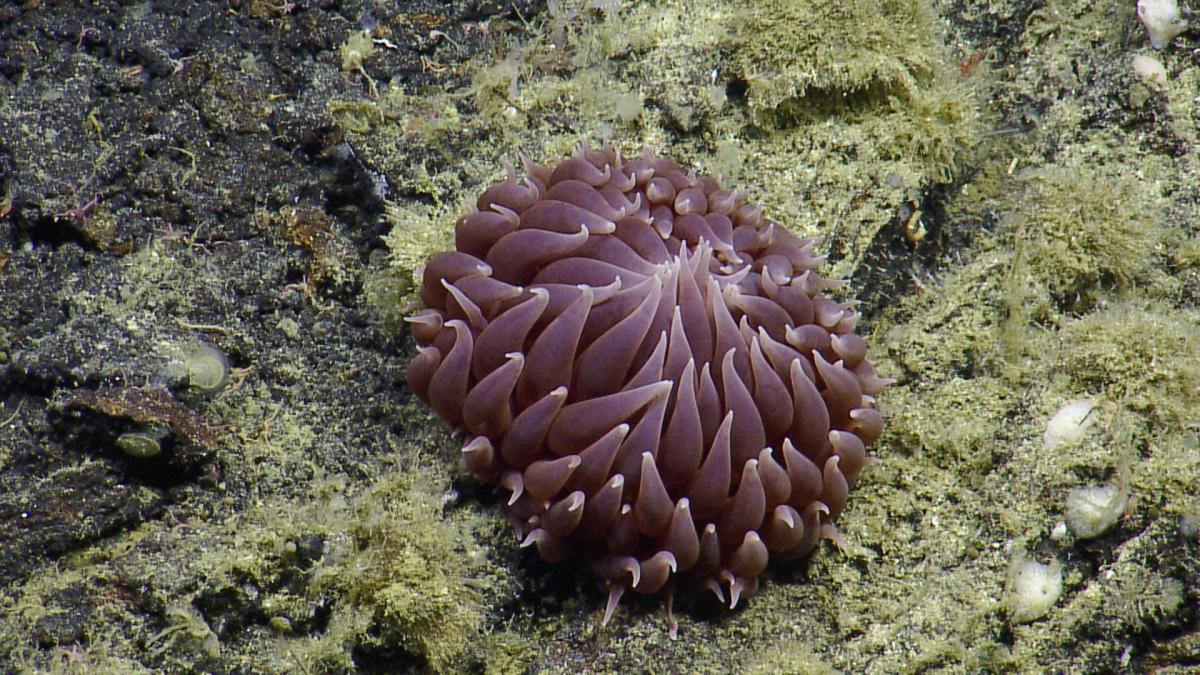
A purple pom pom anemone (Liponema brevicornis) rests on the seafloor of Dellwood Seamount; taken July 8, 2018. Photo Credit: Ocean Exploration Trust/Northeast Pacific Seamount Expedition Partners
This high productivity also attracts large, charismatic species commonly found foraging for food. Past surveys estimate at least 24 species of whales, dolphins and porpoises as well as four species of seals and sea lions frequent this AOI, some of which are endangered like the north Pacific right whale. While animals like the humpback whale are known to make a big splash, the expedition team has also seen other animals that live at the sea surface including seals, ocean sunfish, seabirds and sharks.
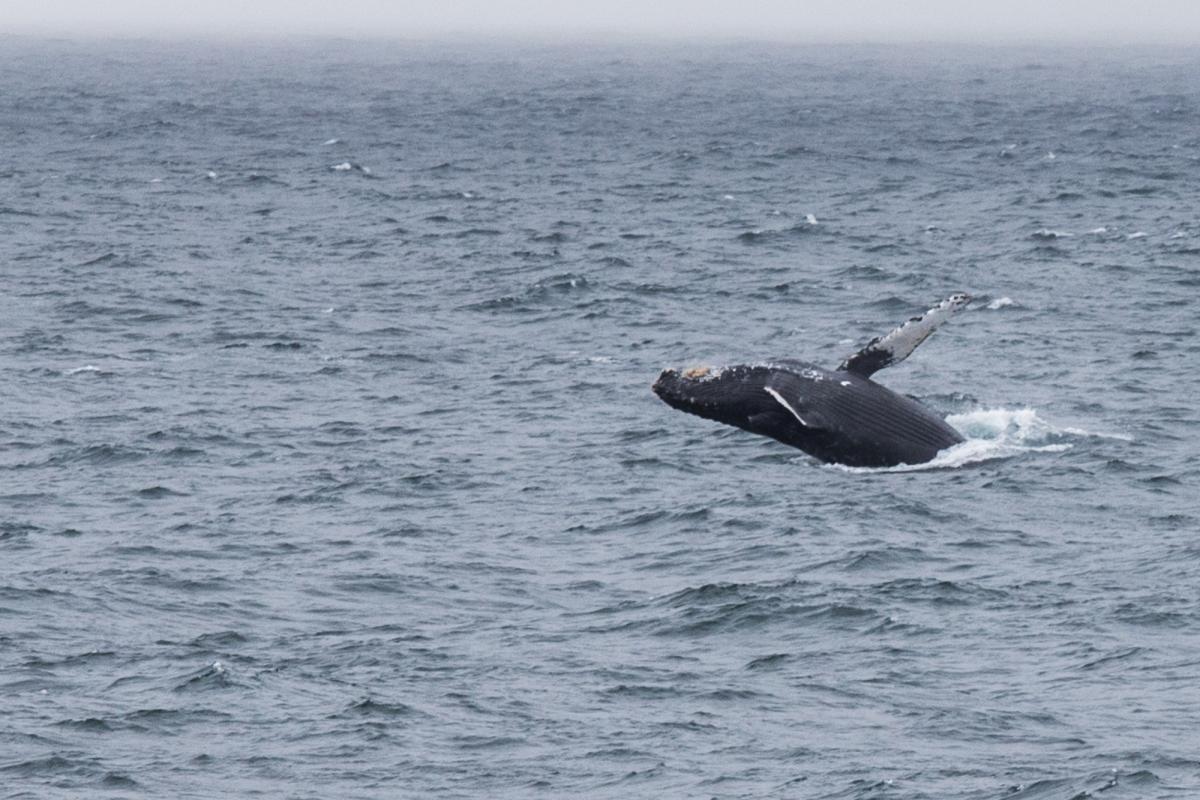
A Pacific humpback whale demonstrates its power and size by doing a back dive, known as a breach! Photo Credit: Northeast Pacific Seamount Expedition Partners
The diversity and abundance of life on the Pacific Offshore AOI’s seamounts and hydrothermal vents are exceptionally vulnerable and valuable – and we are just starting to learn how much so. Humans are putting increasing pressures on our oceans and we need to identify and eventually help protect such special places from future threats. The research collected on the Northeast Pacific Seamount Expedition will help inform conservation measures and keep the abundance of life in this area thriving for years to come.
So far the expedition has mapped and surveyed in the AOI Dellwood Seamount and are about to survey Dellwood South. Join us as we continue on our journey! Get daily updates from the team and watch live footage of the ocean floor at ProtectOceans.ca and follow us on social with the hashtag #PacificSeamounts2018.
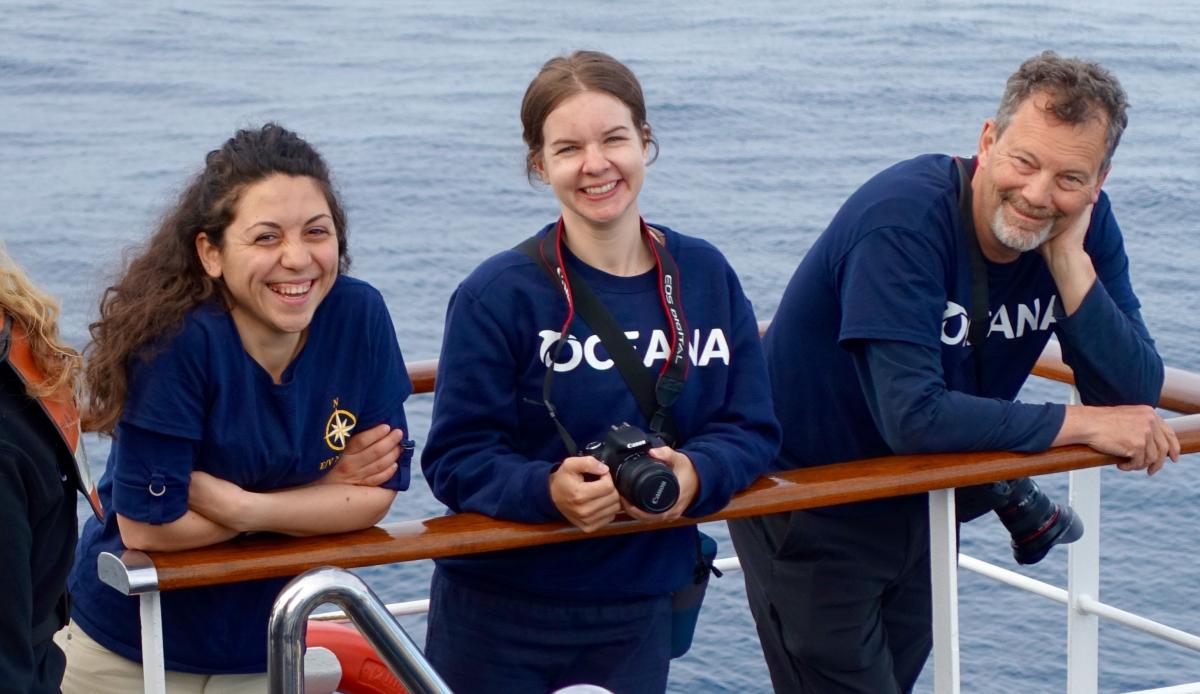
Our onboard Oceana Canada team Jennifer Whyte and Dr. Robert Rangeley enjoying a moment of calm onboard the ship’s deck with Alessia Ciraolo. Photo Credit: Northeast Pacific Seamount Expedition Partners
MOST RECENT
April 24, 2025
March 6, 2025
February 3, 2025
January 22, 2025
Celebrating New Beginnings in 2025: Four Right Whale Calves Spotted Off Florida Coast

